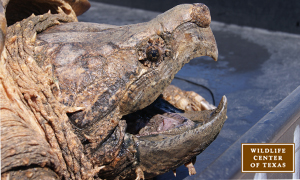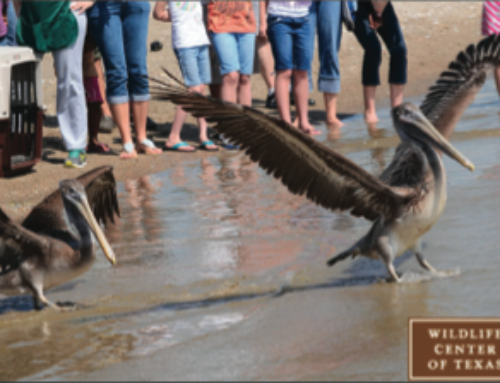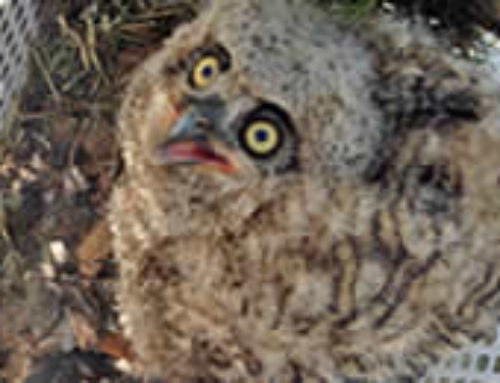The Wildlife Center of Texas received a call from a concerned citizen who had spotted a large turtle trapped in a deep ravine along Buffalo Bayou. A rescue driver from the Houston SPCA was dispatched to pick up the 44 pound injured turtle. The turtle was a female alligator snapping turtle with a stout fish hook imbedded in her cheek. The turtle was sent to Texas A&M’s School of Veterinary Medicine in College Station for surgery. X-ray examination indicated that a second hook was also lodged in the throat of the turtle. The surgery was completed the following day and the turtle was returned to the Wildlife Center.
The alligator snapping turtle is a fascinating native to Houston. The strongly hooked beak and massive head of this creature make it quite distinct. The three rows of pointed scales or scutes on it carapace give it an almost dinosaur-like appearance. Unlike the much more prevalent common snapping turtle, the tail is smooth and not at all “alligator”-like. Hatchling alligator snappers are no larger than a 50-cent piece but rapidly gain weight until they reach maturity at about 12 years. Snapping turtles are obligate carnivores. In its younger years, the alligator snapper feeds primarily on fish by employing a unique physical attribute. On the forward portion of its tongue are two pink extensions that the turtle wiggles about like a worm. The turtle sits motionless with its huge jaws agape until an unsuspecting fish ventures too near. As the alligator snapping turtle ages, it becomes more of an active predator and feeds on fish, crayfish, mussels and clams, and somewhat disturbingly, other turtles. The alligator snapper has chemo-receptors in its mouth than can detect mud and musk turtles buried beneath the mud of river bottoms. Their extremely powerful jaws make short work of these other turtles. Another unique feature of this turtle is that the sex of the offspring is directly linked to the temperature of the nest. The warmer nests produce females and cooler nests produce males. Think, “hot chicks, cool dudes”. This is similar to those other ancient reptiles, alligators, but inexplicably, it is just the opposite in them. Warmer temperatures produce males while cooler temperatures create females.
The alligator snapping turtle is one of the few protected freshwater turtles in Texas. The state has designated them as threatened and it is illegal to take of hold them in captivity. The loss of this species is due to two factors. The usual habitat of the alligator snapper is deep rivers with substantial fallen trees and brush. As rivers and bayous, especially in urban areas, are channelized in order to prevent flooding, the submerged logs are removed. With that, so are the areas that alligator snappers can use. Along with loss of habitat, years of over-harvesting has greatly reduced their numbers. At one time, this harvesting was intentional. Though not as popular as the common snapping turtle, the alligator snapper was still a source of meat. All turtles are air-breathers and the alligator snapping turtle must come to the surface every 45 minutes or so to breathe. Should the line become entangled in the brush that provides it cover, it will sadly drown.
It is all the more remarkable that the alligator snapping turtle has made it to the Wildlife Center. The Texas Natural Diversity Database (TXNDD) which was established 1983, has no records of the alligator snapping turtle in Harris County. Historically, this species was considered extirpated from Houston decades ago. As soon as the stitches in its throat are removed and she is eating well, she will be transferred to them. She will be released in a protected area. We again, thank the concerned citizens of Houston, the Houston SPCA and our volunteers for helping to keep this incredible animal a part of the Houston landscape.
The Bayou City is home to at least 15 species of freshwater turtle. Largest among these, and indeed the largest freshwater turtle in the world, is the alligator snapping turtle, Macrochelys temminckii. Wild caught males of this species have weighed in at over 250 and captive ones have grown even larger. The females cannot match this prodigious weight; the record weight for them being just 51 lbs.







Leave A Comment